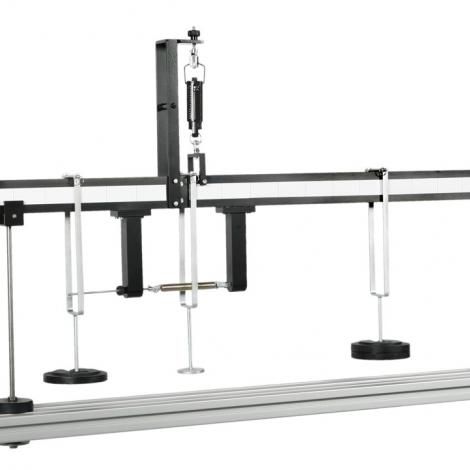A length of material supported horizontally and carrying vertical loads is called a beam. The loading causes bending and transverse shearing. The loads and reactions are the 'external' forces acting on the beam. They must be in equilibrium. However, the strength of the beam depends on 'internal' forces.
This experiment demonstrates the nature of these internal forces and their dependence on the external system of forces.
The experimental beam is in two parts, joined by a pair of bearing rollers running in flat vertical tracks. To develop the internal beam forces at the section an underslung tension spring is used to resist the bending moment, while an overhung spring balance provides the vertical shearing force.
When load is applied to the beams, the underslung spring is adjusted to bring the beam back to a horizontal resting position. The vertical spring balance is also adjusted to ensure the top surfaces of each beam are at the same level. The shear force can then be directly read from the spring balance.
The beam is simply supported on end pins and several weight hangers can be attached at any position on either side of the joint. Labels on the side of the beams show increments every 50mm to assist with hanger positioning.
All the main component parts are mounted to a ‘T’ shaped aluminium base frame.
A hinged metal strip (HFC4A) is optionally available to simulate the loading pattern of a panelled girder for a more advanced experiment on influence lines.
This unit forms part of a range of analogue experiments for statics study, aimed at the value end of the market, where the focus is on manual data recording.


